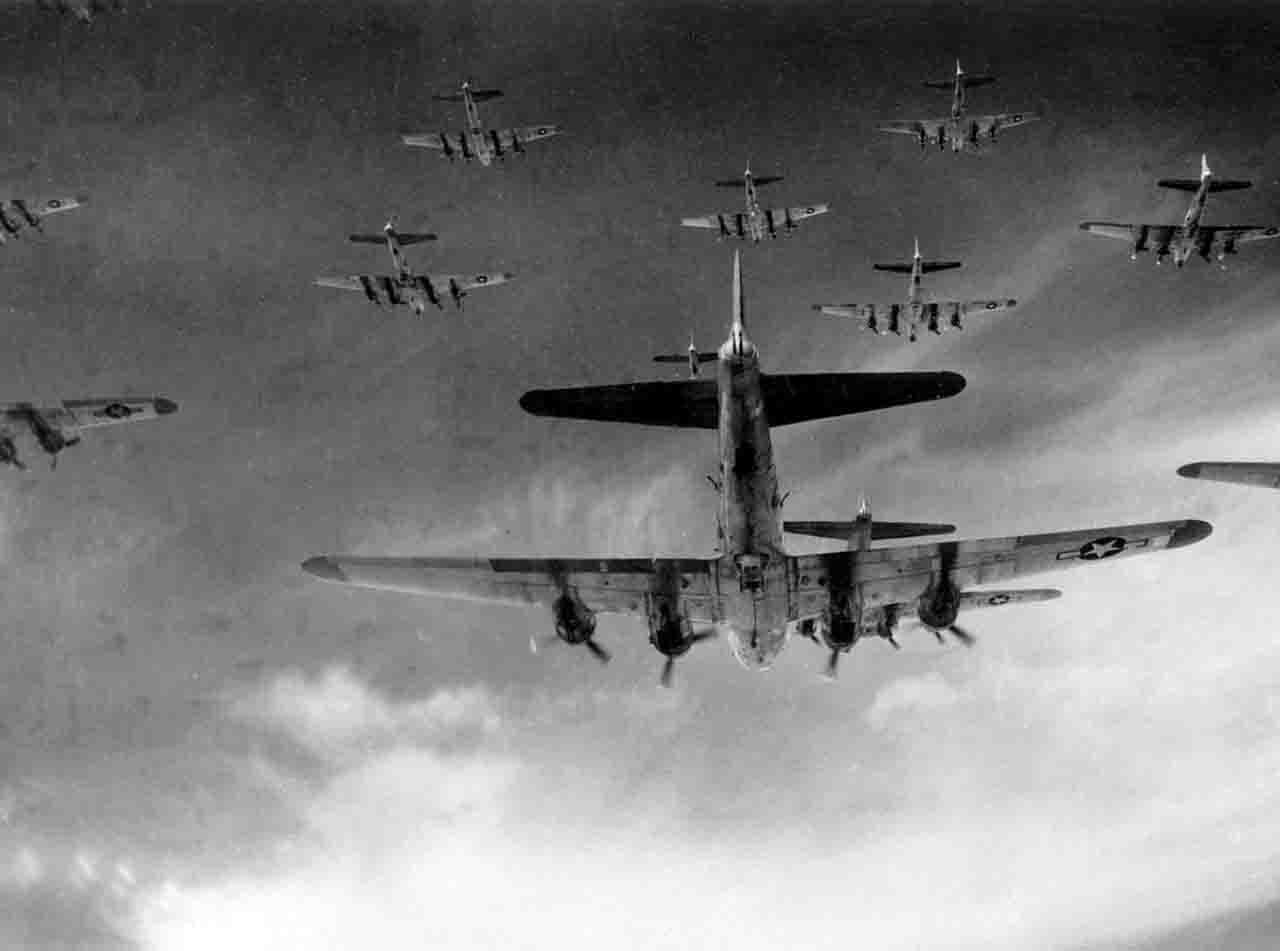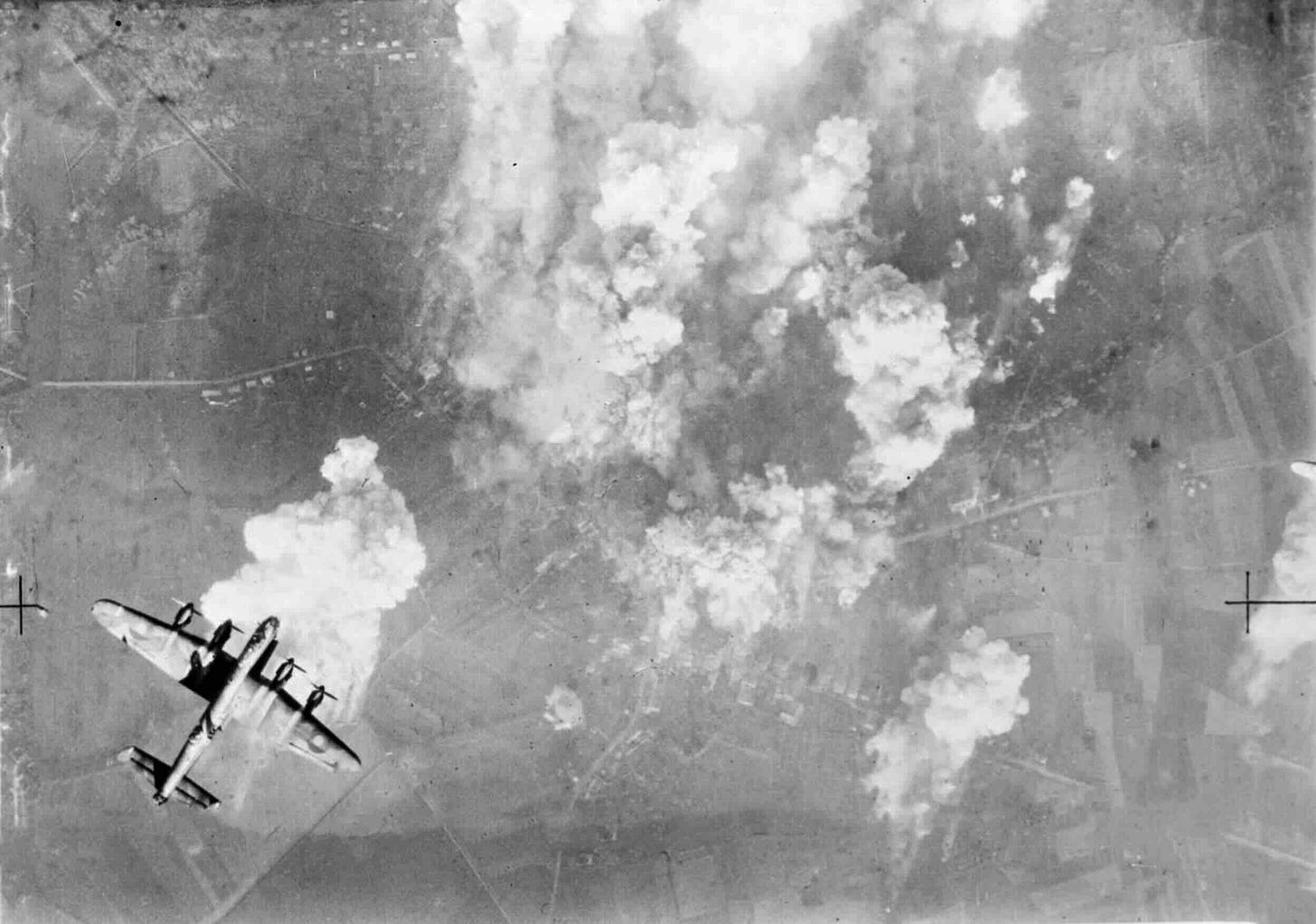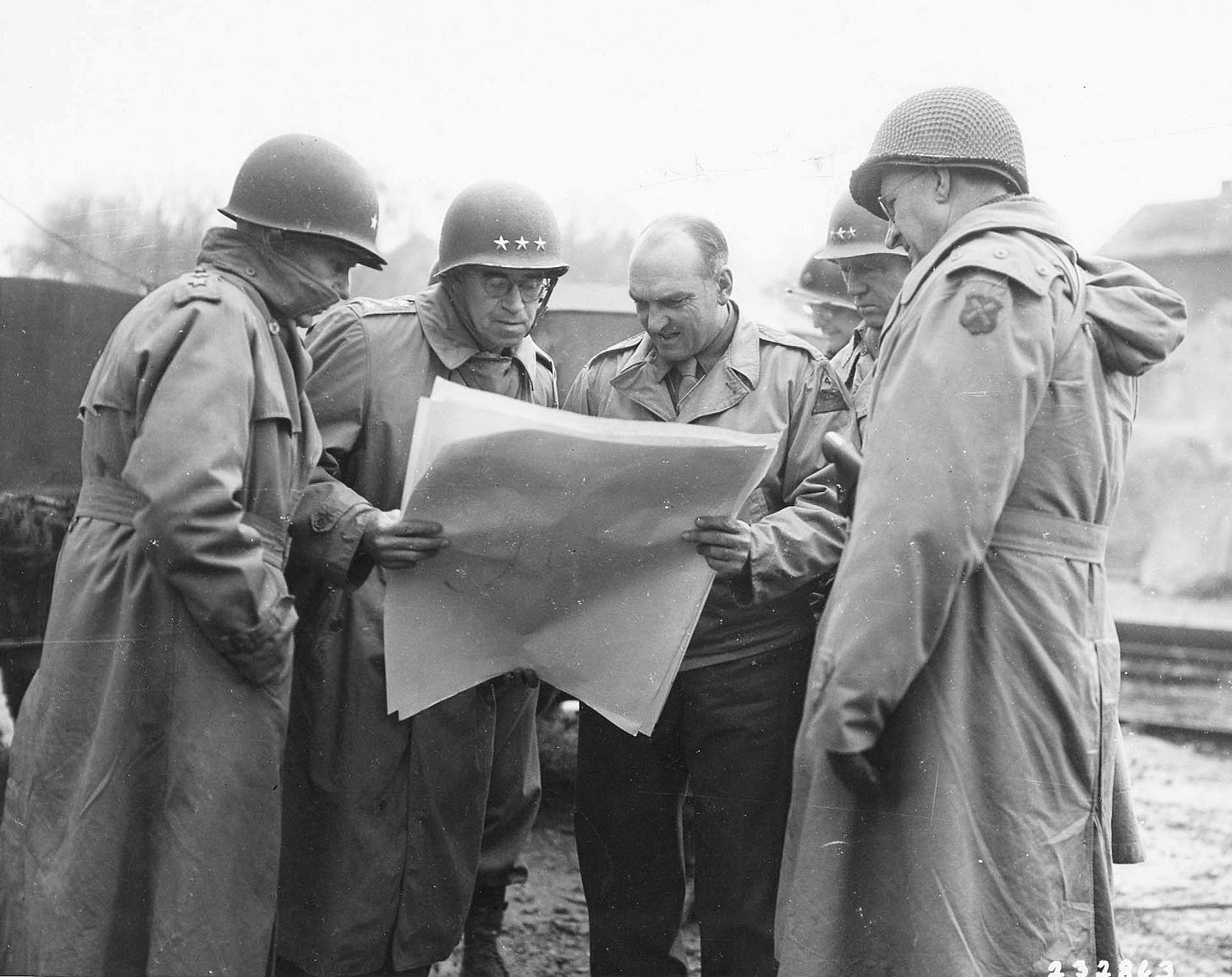Heavy bombers support US Army
16th November 1944: As the US launches another major attack, they take extra steps to guide the heavy bombers onto the Germans ahead of them


With British in the north completing the capture of Walcheren, and the Canadians rolling up the Scheldt estuary, the US forces further south were impatient to get going again after the supply problems began to ease. Now they would head across the Roer river to the Rhine itself.

Omar Bradley1, commanding US 12th Army Group, was waiting for the beginning of the attack with Courtney H. Hodges, both of them as frustrated with the rain as Patton was becoming. They were both elated to find the sun shining on the morning of the 16th November so that the visibility was good enough for heavy bombers from England to launch the attack:
At 12:45 air thundered in on schedule. Twelve hundred bombers of the Eighth Air Force flying in box-tight formations, an equal number of RAF heavies, flying dispersed in the manner of night bombers.

To prevent a repetition of the short drop at St. Lo [in July], we had posted jeeps with vertical radio beams to mark the front lines by radar. For visual guidance to the target a line of barrage balloons with cerise panels affixed to their backs had been hoisted 1,500 feet into the air. For added insurance the 90-mm. AA guns marked the front with a line of colored flak, 2,000 feet below the bombers.
Keep reading with a 7-day free trial
Subscribe to World War II Today to keep reading this post and get 7 days of free access to the full post archives.

